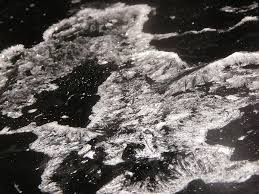Blog
Ketamine Crystals Appearance

Ketamine Crystals Appearance, Ketamine, a dissociative anesthetic primarily used in medical and veterinary settings, has gained attention not only for its therapeutic applications but also for its misuse. One of the most talked-about forms of this substance in both clinical and illicit contexts is ketamine crystals. Understanding the ketamine crystals appearance is crucial for researchers, healthcare professionals, and law enforcement personnel.
What Are Ketamine Crystals?
Ketamine is often found in liquid form for injectable use in hospitals. However, in certain environments, it is evaporated or processed into a crystalline powder form. Ketamine crystals are typically derived from pharmaceutical ketamine that has been dried or “cooked” into a solid state.
Ketamine Crystals Appearance
The appearance of ketamine crystals can vary slightly depending on purity, processing method, and origin. However, some general characteristics include:
-
Color: Most commonly, ketamine crystals are colorless or white. In some cases, impure batches may appear off-white, yellowish, or even have a slightly bluish tint, especially if mixed with other substances.
-
Texture: The crystals are usually coarse and resemble sea salt or crushed ice. They can also appear like shards or flakes depending on how the substance has been crystallized.
-
Clarity: Pure ketamine crystals are typically translucent or semi-transparent. Cloudy or opaque crystals may indicate impurities.
-
Size and Shape: The size can range from small grains to larger shard-like formations. The shapes can vary from jagged edges to more rounded, crystalline chunks.
Crystal vs. Powder
It’s important to differentiate between ketamine crystals and ketamine powder. While crystals are the raw solid form often resulting from drying a liquid solution, the powder is usually a ground or crushed version of these crystals, often used illicitly through insufflation (snorting). The powdered form is finer and resembles flour or baking soda.
Importance of Appearance in Identification
Forensic teams and professionals working in substance regulation pay close attention to the appearance of ketamine crystals. Visual inspection can provide clues about the substance’s origin, purity, and even whether it has been adulterated. However, lab testing is always necessary to confirm any assumptions.
Caution and Legality
Though ketamine is a legal medicine in many countries, its distribution and possession are strictly regulated. Using or possessing ketamine crystals outside of a licensed medical setting can lead to legal consequences. Moreover, misuse of the substance can cause serious psychological and physical health issues, including hallucinations, addiction, and cognitive impairments.
Conclusion
Understanding the appearance of ketamine crystals helps in identifying the substance and gauging its quality and purity. Typically colorless, crystalline, and shard-like, ketamine in its crystal form may look benign but carries significant risks when misused. Whether for academic knowledge or professional application, recognizing ketamine’s physical characteristics is a step toward responsible handling and awareness.
